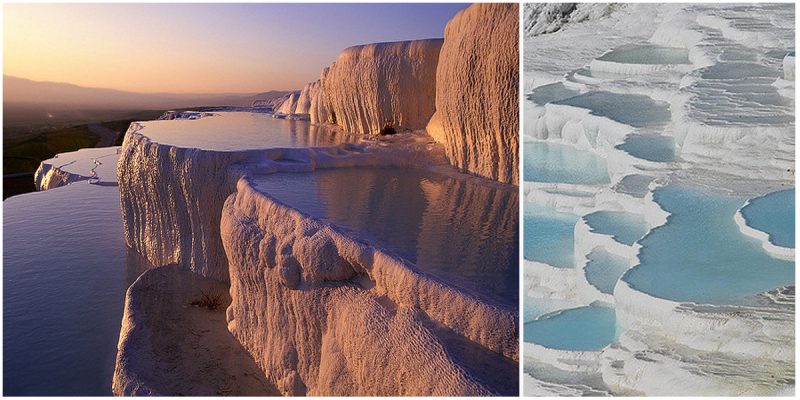Pamukkale is a natural site in Denizli Province in southwestern Turkey. It has been made eternally famous by the gleaming white calcite travertines overrunning with warm, mineral-rich waters.
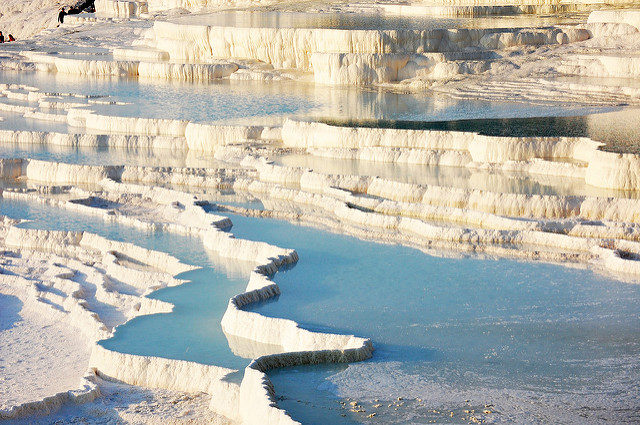
The Turkish name “Pamukkale” means “cotton castle” and is one of the most important highlights of Turkey. This enormous construction of 2,700 meters long, 160 meters high and 600 meters wide can be seen from 20 km away from the town of Denizli.
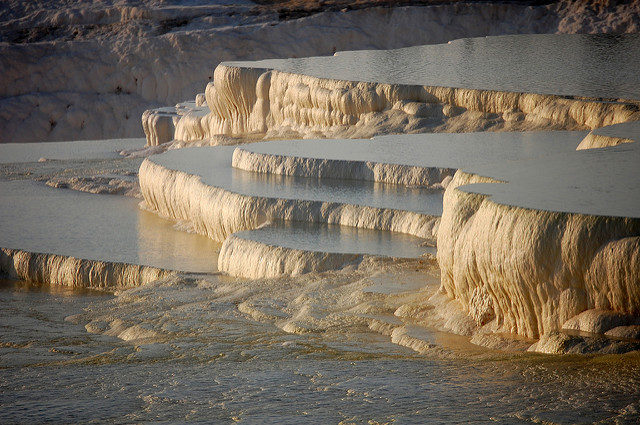
At the end of the 2nd century BC, the kings of Pergamon of the Attalids dynasty established the terminal spa of Hierapolis. The ruins of the temples, baths, and other Greek monuments can be seen at the site.
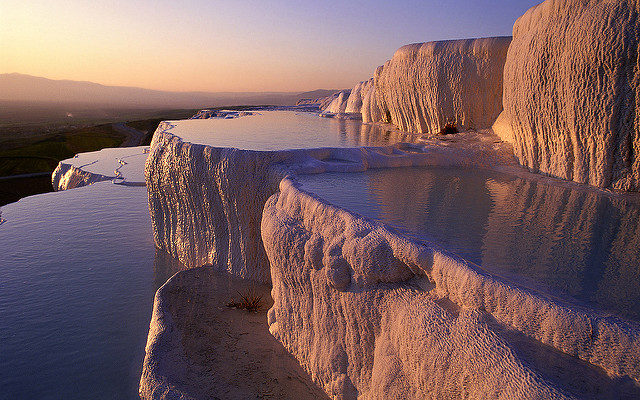
The terraces of Pamukkale are made of travertine, a sedimentary rock deposited by water from the hot springs. There are 17 water springs in this area in which the temperature ranges from 35C to 100C. The water that emerges from the spring is transported 320 meters to the head of the travertine terraces and deposits calcium carbonate on section 60 to 70 meters long covering an expanse of 24 meters to 30 meters.
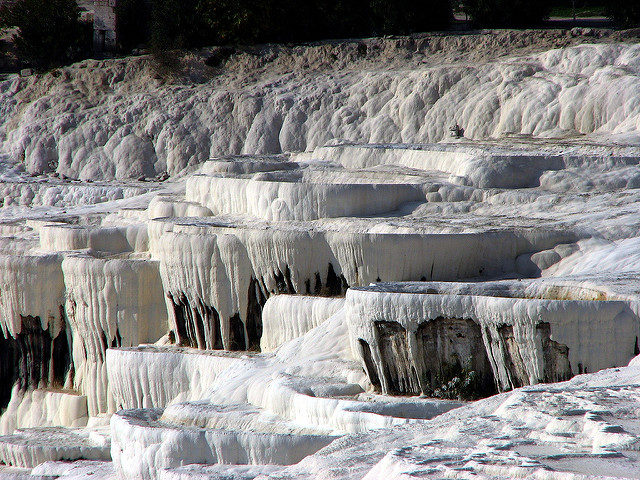
When the water, supersaturated with calcium carbonate, reaches the surface, carbon dioxide degasses from it, and calcium carbonate is deposited. The depositing continues until the carbon dioxide in the water balances the carbon dioxide in the air. Calcium carbonate is deposited by the water as a soft jelly, but this eventually hardens into travertine.
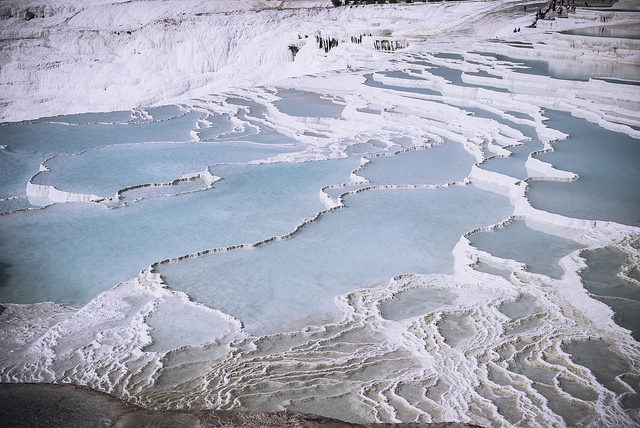
In time, this process resulted in the formation of real stalactites, giving the region a white wintery look. Therefore, this unique place looks like a natural fortress of ice. The water of Pamukkale is famous for its benefits to the eyes and skin and its curing properties to the ills of asthma and rheumatism as well.
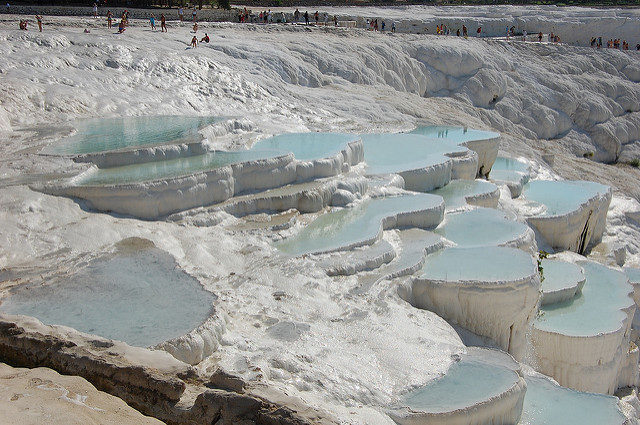
Together with the ruins of Hierapolis, Pamukkale is now a protected UNESCO World Heritage Site. As recently as the mid-20th century, hotels were built over the ruins of Hierapolis, causing considerable damage.
When the area was declared a World Heritage Site, the hotels were demolished and the road removed and replaced with artificial pools.
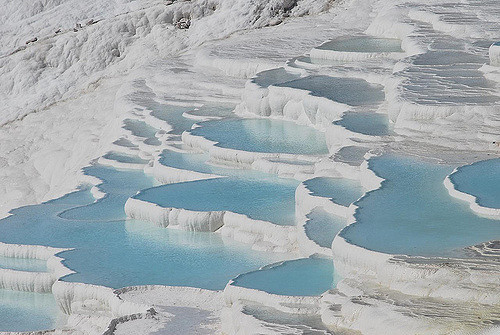
The site is a major tourist attraction and people have bathed in its pools for thousands of years.
